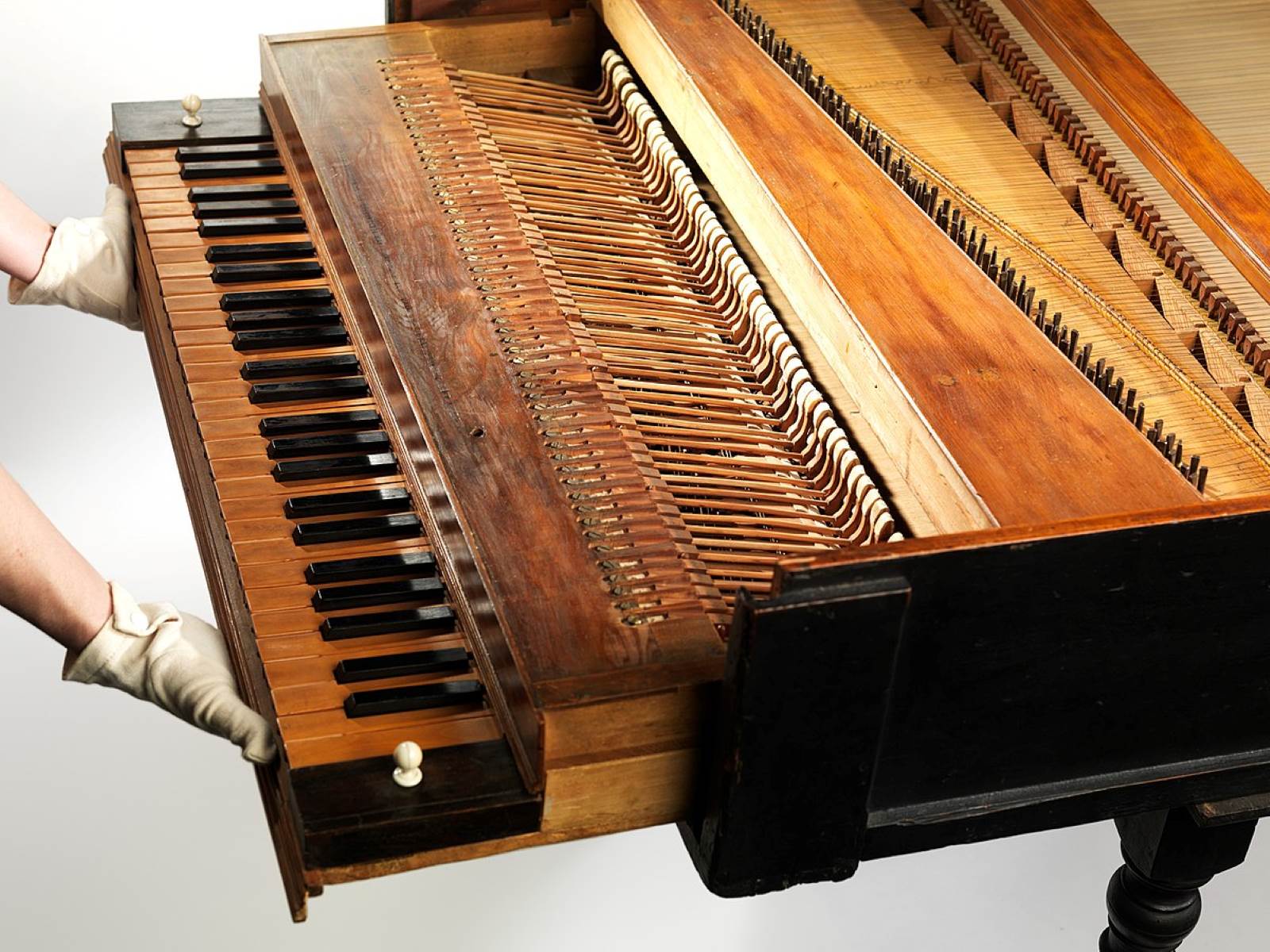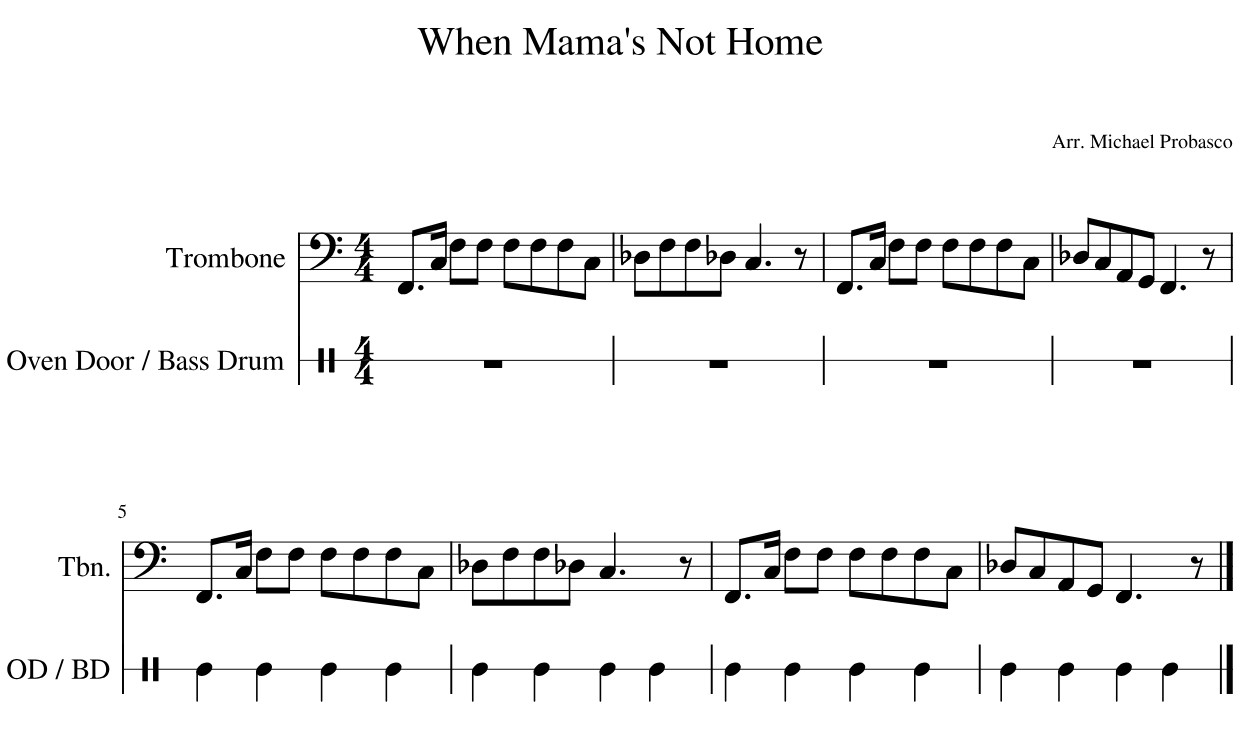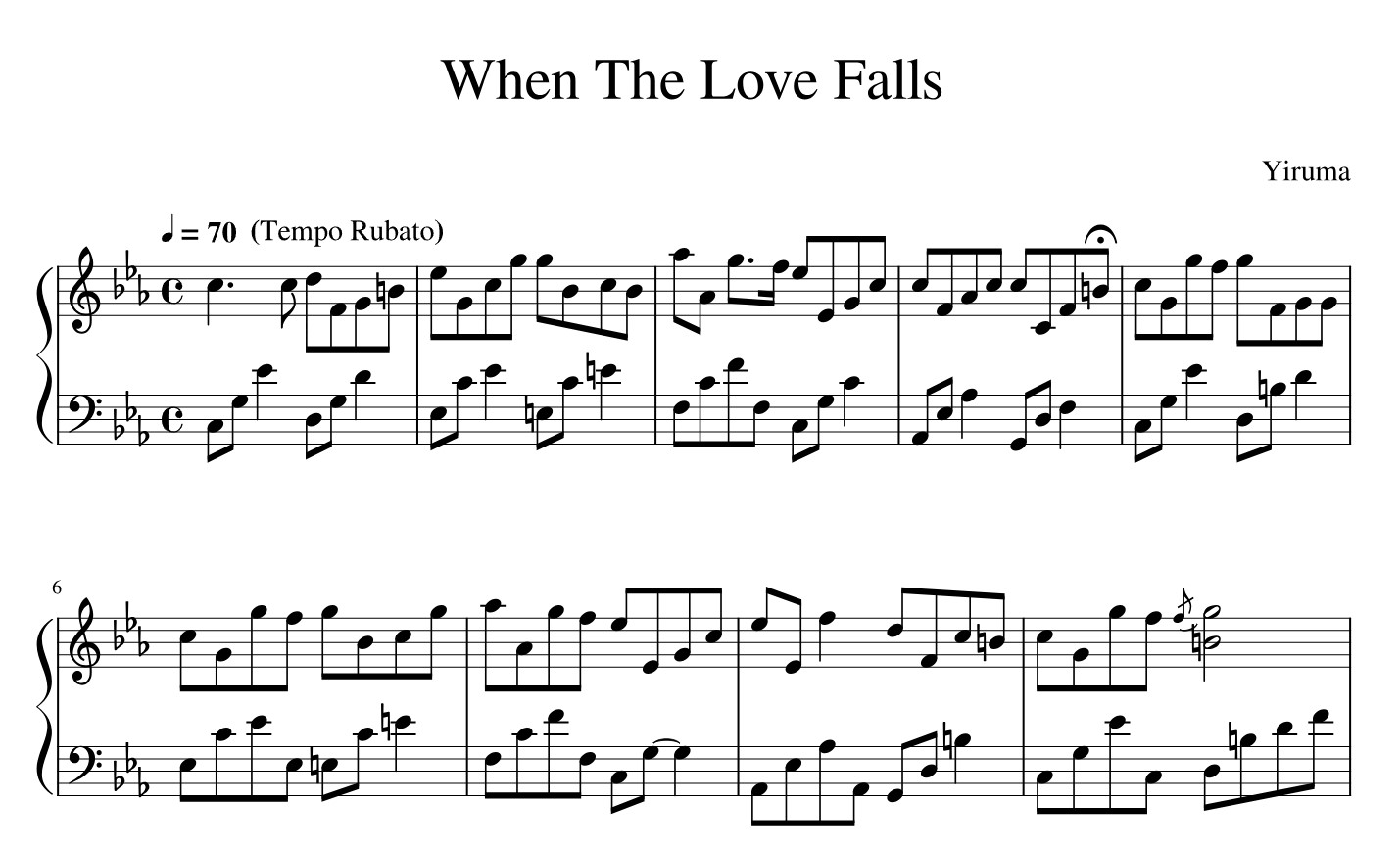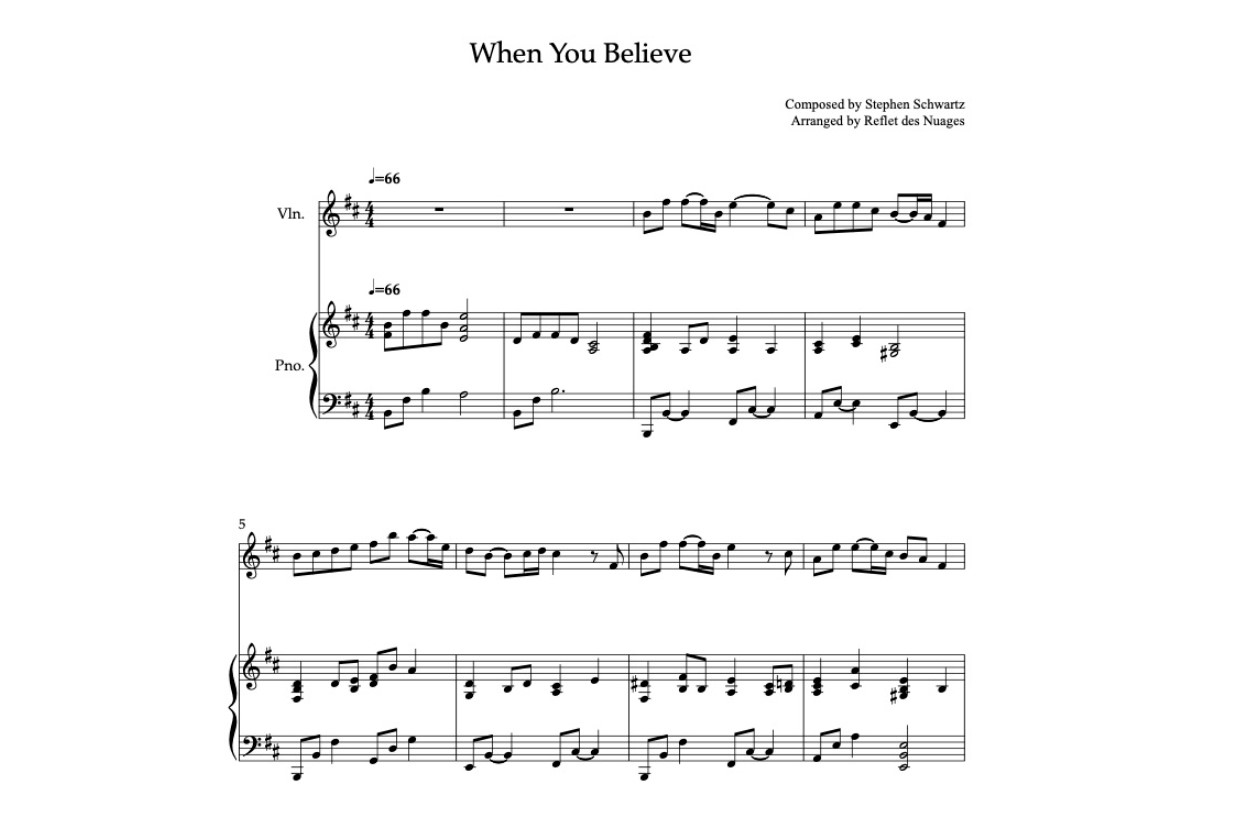Home>Production & Technology>Sheet Music>When Was Sheet Music Invented


Sheet Music
When Was Sheet Music Invented
Modified: January 22, 2024
Discover the origins of sheet music and its invention throughout history. Learn the fascinating story behind the creation of sheet music.
(Many of the links in this article redirect to a specific reviewed product. Your purchase of these products through affiliate links helps to generate commission for AudioLover.com, at no extra cost. Learn more)
Table of Contents
Introduction
Sheet music is an essential part of the music industry, providing musicians with a written representation of musical compositions. It allows musicians to interpret and perform music accurately, preserving the composer’s intentions and allowing for collaboration among musicians. Throughout history, sheet music has evolved and adapted to meet the changing needs of musicians and society as a whole.
This article explores the fascinating journey of sheet music, tracing its origins from ancient times to its current form. From the invention of musical notation to the mass production of sheet music during the Industrial Revolution, we will delve into the milestones that have shaped the way we encounter and engage with music through printed music scores.
Additionally, we will examine the impact of technology on sheet music, as digital platforms and advancements in music notation software have revolutionized the accessibility and distribution of sheet music in recent years.
Join us as we dive into the history of sheet music, uncovering its origins, exploring its transformation across different eras, and discovering its significance in the world of music.
Ancient Origins of Sheet Music
Sheet music has a rich and ancient history that dates back thousands of years. The desire to notate and preserve music can be traced to ancient civilizations such as Egypt, Mesopotamia, and ancient Greece.
In ancient Egypt, musicians used a form of musical notation called hieroglyphic symbols to represent different musical sounds. These symbols were inscribed on papyrus scrolls or carved onto stone tablets. The notation system allowed for the documentation and transmission of musical compositions throughout the Egyptian empire.
Similarly, in ancient Mesopotamia, clay tablets with cuneiform script were used to record and notate musical compositions. These tablets provided a way to preserve and transmit music from one generation to another.
One of the most significant contributions to the development of sheet music comes from ancient Greece. Around the 6th century BCE, the Greeks developed a system known as the Greek vocal notation. This notation system utilized symbols placed above the text to indicate the pitch and duration of each note. Not only did this notation system influence the development of Western music notation, but it also laid the foundation for the diatonic scale that forms the basis of modern music.
Despite these early advancements, sheet music in ancient times was primarily used for religious and ceremonial purposes rather than for widespread musical dissemination. The creation of sheet music was a laborious and time-consuming process, often reserved for the elite.
As civilization progressed, so did the demand for sheet music. In the Middle Ages, the birth of modern music notation revolutionized the way music was written, shared, and performed, paving the way for the Renaissance and Baroque Era where sheet music became increasingly prevalent.
The Middle Ages: The Birth of Modern Music Notation
The Middle Ages marked a significant turning point in the evolution of sheet music. Prior to this period, musical notation was limited and imprecise, making it difficult to accurately document and reproduce musical compositions. However, during the Middle Ages, a new system of notation emerged, which laid the foundation for modern music notation.
One of the most influential references for medieval musicians was the Codex Calixtinus, a 12th-century manuscript that contained a collection of liturgical music, including chants and polyphonic compositions. It featured the use of neumes, which were small symbols placed above the religious text to indicate the melody and pitch contour.
As musical demands grew and the need for more precise notation became evident, Guido d’Arezzo, an Italian music theorist, introduced a landmark innovation in the 11th century. He devised a series of lines, called the staff or stave, and placed neumes on them to indicate specific pitches. This development facilitated a more accurate representation of melody, making it easier for musicians to read and perform compositions.
Guido d’Arezzo also introduced a new set of syllables, known as solmization, which allowed musicians to sing the notes using a mnemonic system (do, re, mi, fa, so, la, ti). This system is still widely used in music education today.
Over the course of the Middle Ages, music notation continued to evolve. The use of neumes gradually gave way to more defined symbols, such as square and diamond-shaped notes, to represent specific pitches and rhythmic values. This refinement in notation paved the way for the development of polyphonic music, where multiple melodic lines could be written and performed simultaneously.
By the end of the Middle Ages, music notation had become more standardized, enabling the widespread dissemination of sheet music. Manuscripts and musical treatises, such as those by famous composers like Guillaume de Machaut and Hildegard von Bingen, played a crucial role in preserving and spreading musical compositions across different parts of Europe.
The birth of modern music notation in the Middle Ages not only transformed how music was written and performed but also laid the foundation for the musical innovations that followed in the Renaissance and Baroque periods.
Renaissance and Baroque Era: Advancements in Sheet Music
The Renaissance and Baroque Era brought about significant advancements in sheet music, shaping the way musical compositions were written, performed, and distributed. This period witnessed an explosion of creativity and innovation, leading to the development of new musical forms and a greater demand for accurate and detailed notation.
One of the key developments during the Renaissance was the invention of the printing press by Johannes Gutenberg in the mid-15th century. This revolutionary invention transformed the process of producing sheet music, making it more efficient and accessible on a larger scale. Printed music scores allowed for the widespread dissemination of compositions, enabling composers to reach a broader audience and establish their musical legacies.
During this time, composers such as Josquin des Prez and Giovanni Pierluigi da Palestrina emerged as influential figures, known for their mastery of polyphonic music. Their compositions, notated with increasing precision, showcased complex harmonies and intricate musical structures.
The notation system also underwent significant improvements during the Renaissance. Composers started using barlines to group notes into measures, indicating the rhythmic organization of the music. This innovation provided musicians with clearer and more explicit instructions on how to interpret and perform a composition.
As the Baroque Era arrived, even more developments in sheet music emerged. Composers like Johann Sebastian Bach and George Frideric Handel pushed the boundaries of music composition, utilizing ornate and complex musical textures.
One notable advancement during the Baroque Era was the creation of figured bass notation. Figured bass, also known as thoroughbass, provided harmonic guidelines for musicians, allowing them to improvise or create accompaniment parts based on the given notes and chords. This system was particularly prevalent in keyboard and continuo accompaniment music.
Additionally, more descriptive markings and expressive indications were introduced into sheet music during the Baroque Era. Composers began using dynamic markings, such as pianissimo (very soft) and fortissimo (very loud), and expressive indications, such as legato (smooth and connected) and staccato (short and detached), to provide performers with specific instructions on how to interpret the music.
The advancements in sheet music during the Renaissance and Baroque Era opened up new possibilities for composers, performers, and listeners alike. The availability of printed scores, improved notation systems, and the growing demand for detailed instructions laid the groundwork for future musical developments.
The Industrial Revolution and Mass Production of Sheet Music
The Industrial Revolution, which began in the 18th century, brought about significant advancements in technology, including the mass production of sheet music. The advent of mechanized printing techniques revolutionized the music publishing industry, making sheet music more readily available and affordable for musicians and music enthusiasts.
Prior to the Industrial Revolution, sheet music was primarily produced by hand, limiting its production and distribution. However, with the invention of steam-powered printing presses and lithography, music publishers were able to produce sheet music in larger quantities and at a much faster rate.
This newfound ability to mass-produce sheet music allowed for a greater variety of musical genres and compositions to be published. Publishers capitalized on the popularity of popular songs, classical compositions, and dance music, catering to the diverse tastes of the growing middle-class audience.
The increased availability of sheet music during this time played a vital role in the dissemination of musical trends and styles. Composers, such as Ludwig van Beethoven and Franz Schubert, gained wider recognition as their compositions could reach a larger audience through printed scores.
Furthermore, the convenience of printed sheet music spurred the rise of amateur musicians and home entertainment. Families would gather around the piano to sing and play popular tunes, leading to the development of parlor music and the establishment of a thriving music market.
Sheet music became a commodity accessible to more people, enabling individuals to engage with and perform music in their homes. It fostered a culture of music appreciation and participation, paving the way for music education and the formation of community-based musical societies.
The mass production of sheet music also brought challenges and opportunities for composers and performers. It allowed composers to reach a wider audience and earn income from the sale of their compositions. However, it also led to issues of copyright infringement, as unauthorized copies of sheet music could easily be produced and distributed.
In response to this challenge, organizations like the Music Publishers Association were established to protect the rights of composers and ensure fair compensation for their work.
The Industrial Revolution and the mass production of sheet music transformed the music industry, democratizing access to music and fueling the spread of musical culture. This period marked a significant shift in the production and availability of sheet music, laying the foundation for the music publishing industry as we know it today.
The Rise of Music Publishing
With the advent of the printing press and the mass production of sheet music, the music publishing industry experienced rapid growth and became an essential part of the music ecosystem. Music publishers played a crucial role in the dissemination, promotion, and commercialization of sheet music, shaping the landscape of the music industry.
During the 19th century, music publishers emerged as key intermediaries between composers and musicians. They not only printed and distributed sheet music but also actively sought out talented composers to sign publishing contracts. These contracts allowed publishers to have exclusive rights to publish and sell a composer’s works.
Music publishers played a significant role in fostering the careers of renowned composers, such as Johann Strauss II, Frédéric Chopin, and Johannes Brahms. By promoting and distributing their compositions, publishers helped them gain recognition and successfully reach a wide audience.
Additionally, music publishers played a crucial role in arranging and adapting popular tunes for different instruments and ensembles, catering to the diverse needs of musicians. They also contributed to the development of music catalogs and collections, ensuring the preservation and accessibility of musical compositions.
The establishment of music publishing houses, such as Breitkopf & Härtel and G. Schirmer, provided a centralized hub for composers, musicians, and music enthusiasts to interact and exchange musical ideas. These publishing houses became influential institutions, not only in terms of publishing sheet music but also in shaping the musical tastes and trends of the time.
The rise of copyright laws and copyright protection further solidified the role of music publishers. Copyright laws allowed composers to protect their intellectual property and retain control over the publishing and distribution of their works. Publishers, in turn, were responsible for enforcing these copyrights and ensuring that composers were duly compensated for their creative endeavors.
The influence of music publishers extended beyond the realm of classical music to popular genres as well. Tin Pan Alley, an iconic music publishing district in New York City in the late 19th and early 20th centuries, played a central role in the promotion and commercialization of popular songs. Publishing companies such as Warner/Chappell and ASCAP continue to be significant players in the music publishing industry, ensuring that songwriters and composers are compensated for the use of their copyrighted works.
Music publishing remains a vital aspect of the music industry today, although it has undergone significant transformations due to digitalization and the rise of streaming platforms. Music publishers continue to adapt to the changing landscape, utilizing digital platforms to distribute and monetize sheet music, while also embracing new opportunities such as sync licensing and music supervision.
The rise of music publishing marked a milestone in the music industry, enabling composers to reach a wider audience, preserving musical compositions for future generations, and playing a pivotal role in the commercialization and dissemination of music.
The Impact of Technology on Sheet Music
Technology has had a profound impact on the way sheet music is created, consumed, and distributed. From digital notation software to online platforms, new technological advancements have revolutionized the accessibility, convenience, and creative possibilities of sheet music.
One of the most significant advancements is the development of digital notation software. Programs like Sibelius and Finale allow composers, arrangers, and musicians to create, edit, and share sheet music digitally. This has streamlined the composition process, making it easier to notate and arrange music with greater precision and efficiency.
With digital notation software, musicians can also listen to MIDI playback, enabling them to hear their compositions come to life before it is performed or recorded. This real-time feedback helps composers refine their work and make necessary adjustments to achieve their desired musical results.
Additionally, the rise of the internet and online platforms has transformed the distribution and accessibility of sheet music. Websites and digital marketplaces, such as Musicnotes and Sheet Music Plus, allow musicians to purchase and download digital sheet music instantly. This has eliminated the need for physical copies and shipping delays, providing immediate access to a vast library of music.
Digital sheet music also offers advantages in terms of portability and storage. Musicians can carry entire collections of sheet music on their tablets or e-readers, eliminating the need for bulky binders or stacks of paper. This convenience has been particularly valuable for musicians who perform live or travel frequently.
Furthermore, technology has opened up opportunities for collaborative music-making. Online platforms and cloud-based software enable musicians from different locations to collaborate in real-time by sharing and editing sheet music digitally. This has facilitated remote collaborations, fostering creativity and collaboration without geographical limitations.
Another significant development is the emergence of interactive sheet music. With advancements in touchscreen technology, musicians can now interact with their digital scores in dynamic ways. Interactive sheet music platforms, such as Tonara and Newzik, offer features like annotation tools, audio playback, and automatic page-turning, enhancing the overall experience for performers.
Moreover, technology has made learning and practicing music more engaging and accessible. Apps and software, such as Playground Sessions and Flowkey, provide interactive tutorials and lessons, allowing beginners to learn how to read sheet music and play their favorite songs at their own pace.
While technology has undoubtedly brought numerous benefits to sheet music, some challenges have also emerged. Issues related to copyright and piracy persist in the digital realm, requiring ongoing efforts to protect the rights of composers and publishers. Additionally, the transition to digital formats has created a demand for standardized file formats to ensure compatibility across different software and devices.
Despite these challenges, the impact of technology on sheet music has been transformative. It has democratized music creation and consumption, expanded the possibilities for collaboration, and provided musicians with new tools and platforms to enhance their craft. As technology continues to evolve, we can expect further innovations that will shape the future of sheet music.
Conclusion
Sheet music has a rich and fascinating history that spans centuries. From its ancient origins in civilizations like Egypt and Mesopotamia to the advancements in musical notation during the Middle Ages and the rise of music publishing in the Renaissance and Baroque Era, sheet music has evolved and adapted to meet the changing needs of musicians and society.
The Industrial Revolution revolutionized the production of sheet music, enabling mass production and making it more accessible to a wider audience. Music publishing played a vital role in promoting and distributing sheet music, allowing composers to gain recognition and reach a broader base of listeners.
Technology has had a tremendous impact on sheet music, transforming the way it is created, distributed, and consumed. Digital notation software and online platforms have streamlined the composition process, while digital sheet music and interactive features have revolutionized accessibility and engagement for performers.
Through technological advancements, sheet music has become more portable, convenient, and collaborative. Musicians can access a vast library of sheet music instantly, collaborate with others remotely, and utilize interactive tools to enhance their performance and practice.
However, with the benefits of technology come challenges, such as copyright protection in the digital realm and the need for standardized file formats. These challenges require ongoing efforts to ensure the fair compensation and recognition of composers and the preservation of their intellectual property.
In conclusion, sheet music continues to play a vital role in the world of music. It preserves musical compositions, facilitates performance and collaboration, and serves as a gateway to musical discovery and appreciation. As technology continues to advance, we can anticipate further innovations and transformations that will shape the future of sheet music and redefine how we engage with and experience music.











